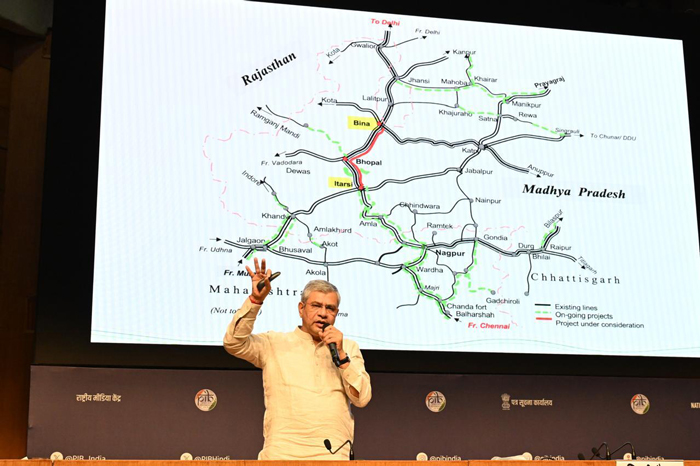Since June 2024, the Government of India has launched one of its most ambitious infrastructure investment cycles, spanning aviation, highways, railways, ports, metro systems, housing, and more.
Since the start of Prime Minister Narendra Modi’s third term on June 9, 2024, the central government has committed over ₹12 trillion towards infrastructure development across key sectors, Ashwini Vaishnaw, Minister of Railways and Information & Broadcasting, has said.
The Cabinet approvals span aviation, ports, highways, railways, metro systems, industrial corridors, housing, hydroelectric infrastructure, and ropeways, marking one of the most ambitious investment cycles in recent years.
“During Prime Minister Narendra Modi’s historic third term, infrastructure has emerged as our foundational benchmark for the next generation,” Vaishnaw said during a Cabinet Committee on Economic Affairs (CCEA) briefing in New Delhi on Tuesday.
In the aviation sector, ₹73.39 billion has been allocated for the development of airports at Bagdogra, Bihta, Varanasi, and Kota, aimed at improving regional air connectivity and easing congestion at existing hubs. Maritime infrastructure has received a massive boost with ₹1.45 trillion earmarked for a major port at Vadhavan near Dahanu in Maharashtra, alongside shipbuilding and maritime development reforms to strengthen India’s coastal logistics and global trade competitiveness.
Highways and road infrastructure continue to dominate the investment landscape, with ₹1.89 trillion approved for eight national high-speed road projects, rural connectivity under the PM Gram Sadak Yojana, and strategic corridors in the border areas of Punjab and Rajasthan. The plan also includes six-lane and four-lane expansions across Bihar, Tamil Nadu, Odisha, Assam, and Meghalaya, reinforcing multimodal logistics and last-mile access.
Railways remain a pivot of the infrastructure push, with ₹1.49 trillion sanctioned for 41 projects covering 5,696 km of new lines and multitracking upgrades. These projects are designed to decongest high-density corridors, improve freight mobility, and support regional development through enhanced rail access.
A Transformative Investment Cycle
Vaishnaw further added that the spending will have a transformative effect on the economy.
“This investment will have a profound impact on the economy. Over the next five to six years, India is poised to grow at a healthy pace. We can say with a high degree of confidence that India will continue to be the world’s fastest-growing major economy.”
Urban mobility has also seen significant traction, with ₹1.09 trillion approved for metro rail projects in Bengaluru, Thane, Pune, Chennai, Delhi, and Lucknow. These corridors are expected to ease urban congestion, reduce emissions, and improve daily commute times for millions.
Industrial development has been prioritised through ₹286.02 billion allocated for 12 smart cities, aimed at fostering innovation, manufacturing, and employment. Housing remains a flagship commitment, with ₹5.36 trillion set aside under the PM Awaas Yojana to build one crore urban homes and two crore rural homes.
Hydropower infrastructure has received ₹284.32 billion for enabling projects in the Northeast, including equity support for state governments and new hydroelectric ventures such as Tato-II in Arunachal Pradesh. Ropeway connectivity for pilgrimage and tourism has also been greenlit, with ₹68.11 billion approved for Kedarnath and Hemkund Sahib in Uttarakhand.
In the Union Budget for FY2025, India allocated ₹11.11 trillion for the infrastructure sector, which has been increased by 16.5 per cent in FY2026 to ₹12.94 trillion.
-Manish Pant


